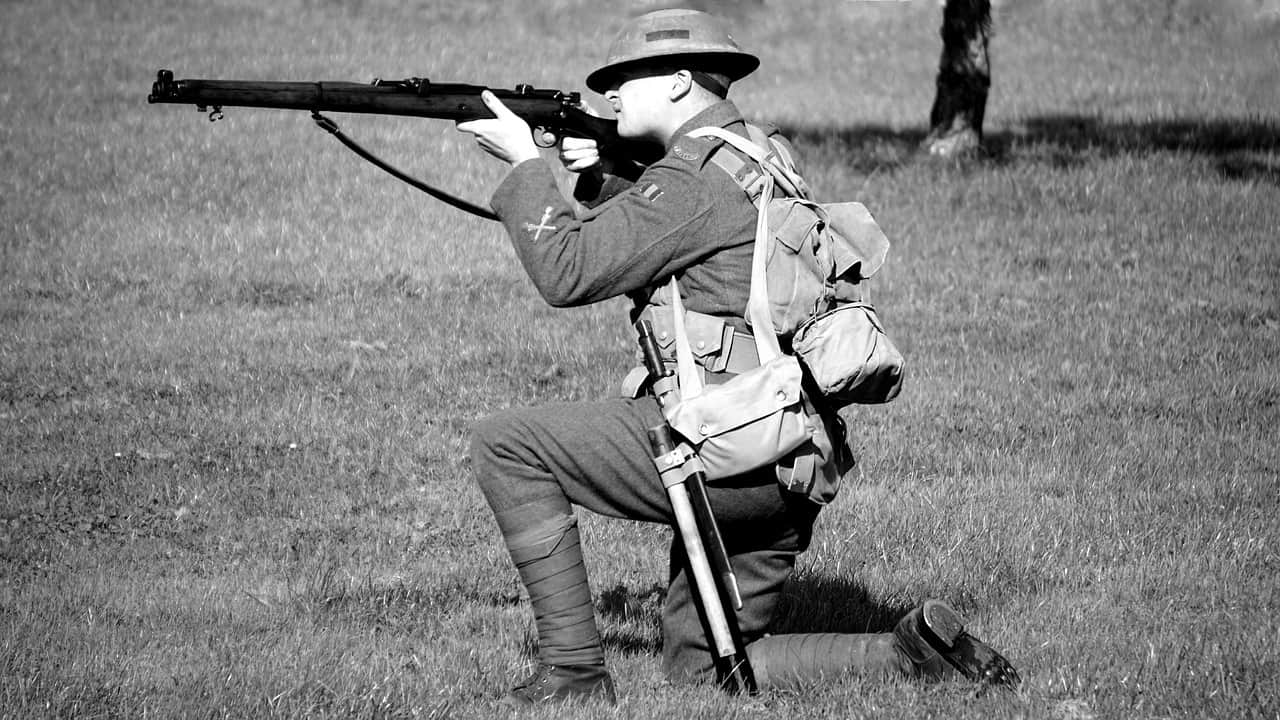The National Rifle Association (the link is to their website) was founded in 1871 to “promote and encourage rifle shooting on a scientific basis.” As the nation’s best known source of information about shooting, the NRA has expounded a set of rules for gun safety.
These rules expand on the four cardinal rules of shooting. Follow these rules to make shooting your gun fun and safe.
Always Keep the Gun Pointed in a Safe Direction.
If you are bumped or are startled you could shoot accidentally, so keep the gun barrel directed away from anything you don’t wish to shoot.
Shooting instructors tell stories of the students who “muzzled” them by carelessly pointing the gun in their direction. We gesture with our hands, and with a gun in your hand that gesture becomes reckless, so put the gun down while you have a conversation.
We tend to turn our bodies in the direction where we are looking. Keep your eyes focused on the target when you are shooting and don’t be distracted by the conversation in the next booth.
Be aware of flinching. When someone in the next booth shoots you will have a tendency to respond physically. Keep your gun pointed down range.
When you are carrying your gun, be aware of the direction in which the muzzle is pointing. Don’t let your feet or the person ahead of you become a target.
If you are standing at a bench waiting your turn, be aware of how you lay the gun down. Even at rest, the muzzle should point toward the target area, not back at you or the person next to you.
When you hand your gun to someone else, the safest way is to lay it down and let the other person pick it up. If you have to share it for a moment, keep it pointed to the side and allow enough room on the grip for the other person to avoid the trigger when taking it.
Always Keep Your Finger Off the Trigger Until Ready to Shoot.
Movie stars tend to keep their fingers in the trigger while they hold the bad guy, but if you do that, you will be very surprised when you accidentally squeeze the trigger you did not realize you were holding.
We instinctively find that trigger finger going into the place that is provided and using it as a resting place, but the proper location for your index finger is extended alongside the barrel.
Negligent discharge is a scary event, and it happens when someone pulls the trigger unintentionally. Abstinence is one hundred percent effective where your trigger finger is concerned.
Always Keep the Gun Unloaded Until Ready to Use.
The NRA advises storing your guns unloaded. You are using your gun, by the way, if you are keeping it in readiness for personal protection.
Make sure you have safeguards in place so that you are the only person with access. A loaded gun lying around is an accident waiting to happen.
You and those who live in your house need to be able to identify whether your gun is loaded. With a revolver, you can check by pointing the gun in a safe direction, activating the cylinder release behind the cylinder, and swinging the cylinder out.
You will see the individual chambers and identify whether a round has been inserted. Unload the cylinder by tipping the muzzle upward and pressing the ejector rod, then press the cylinder back into place.
To check your semi-automatic, point the muzzle in a safe direction and rack the slide by pulling it backward.
The round in the chamber will be exposed when the slide moves backward. It will be ejected and another round seated when you allow the slide to move forward.
To remove the magazine from a semi-automatic pistol, activate the magazine release that will be at the rear of the trigger guard or integrated into the trigger guard.
To check a bolt action rifle, point the gun in a safe direction. Engage the safety if it has one. Open the action by moving the bolt handle up and back, causing the cartridge to eject.
If it does not eject automatically, remove it by hand. If the magazine is detachable, remove it; otherwise keep using the bolt to remove all the loaded cartridges.
For a pump action rifle or shotgun, point the gun in a safe direction. Turn on the safety if it has one. Activate the action release and slide the forestock backward to eject the ammunition. Keep cycling until all cartridges are removed.
To check an AR-15, point the gun in a safe direction. Activate the safety. Remove the magazine by activating the magazine release located above the trigger guard. Pull the charging handle back to release any chambered rounds.
The first time you check or unload any gun, have someone experienced with you to ensure you are doing it correctly.
Know Your Target and What Is Beyond It.
Bullets don’t just stop when they hit the target. They keep going until an equal and opposite force stops them.
On the shooting range, there must be a backstop behind the target so the bullet won’t keep going and hit something beyond your intended range.
When using a gun for self defense, be aware of the space you are in. When you shoot at an assailant in your living room, there is a chance the bullet will keep going into the next room over.
Know How to Use the Gun Safely.
This is not a time for learning by doing. Have someone show you the basics, and take an experienced shooter with you until you are confident that you understand how to load, how to shoot, how to be safe, and what to do in case of a jammed bullet.
Each type of gun operates differently, and within each category manufacturers will vary the locations of the parts. When in doubt, obtain instruction.
Be Sure Your Gun Is Safe to Operate.
Regular cleaning and inspection keep you from trying to operate a malfunctioning weapon. The explosion that propels the bullet out of the gun releases burnt gunpowder, which eventually fouls up the action.
If you find your gun hesitating or otherwise acting strangely, stop and inspect it. Get someone to help you if you are not familiar with guns.
Use Only the Correct Ammunition For Your Gun.
Double check the box every time you shoot. Bullets come in specific lengths and widths and are not interchangeable. Don’t substitute because the wrong size will get stuck when attempting to load. You risk damaging your gun and harming yourself in the process.
In addition to width (caliber) and length, ammunition comes in different weights.
Wear Ear and Eye Protection As Appropriate.
Any time you are around live fire you need to wear goggles or glasses to protect your eyes from flying shrapnel, including the ejected casing of the bullet that was just shot.
Ear protection may take the form of muffs or plugs. Nicer models suppress loud sounds but also magnify the conversation around you between shots. You will appreciate this if you find yourself yelling questions to defeat the earplugs in your ears and those of your neighbors.
You don’t have to be the person shooting to need eye and ear protection. Everyone on the range should wear equipment.
Never Use Alcohol or Drugs Before Or While Shooting.
Prescription medicines and over the counter medicines can change your alertness and slow your reflexes. Know how you react to a given medicine.
Lapses in judgement at a shooting range may cost you your life–or your freedom if you negligently shoot someone else.
Store Guns So They Are Inaccessible to Unauthorized Persons.
Young children may pick up a gun out of curiosity and imitate what they have seen the people on television do–with dire results. Older children and untrained adults pose a risk as well.
No one should have access to your guns but you. Invest in a locked box, a safe, or a gun lock and be consistent with its use. As children get older, gradually introduce them to guns in a safe, nonthreatening manner.
Additional Safety Precautions.
Some shooting sports involve running with the gun or moving from target to target quickly. Make sure you know the rules for your sport.
Cleaning
A fouled barrel poses a risk of the ammunition not moving well, and eventually even failing to fire. Keep your gun clean. Every few months should suffice for a casual shooter..
Be consistent and deliberate about the rules of safety for gun use. Know first aid and keep a phone handy. Triple check the chamber to make sure your gun is empty before you demonstrate a technique or practice something new such as drawing from a holster.
You have plenty of opportunities to practice your skills, but no do-overs if you seriously injure yourself or another person. Be safe!


